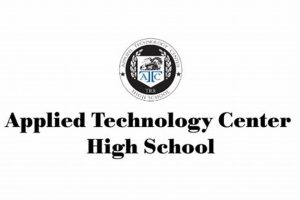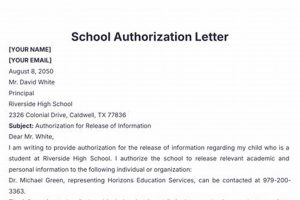Engaging adolescents in holiday-themed projects offers opportunities for creative expression, social interaction, and reflection on the spirit of gratitude. Examples include collaborative art projects centered around autumnal themes, volunteer work benefiting the local community, or reflective writing prompts encouraging students to express what they are thankful for. These projects can be adapted to fit various classroom settings and subject matter.
Such participatory experiences cultivate a sense of community and provide a positive outlet for students during the holiday season. They can reinforce values of empathy and civic responsibility, while also providing valuable opportunities for social-emotional learning. Historically, Thanksgiving celebrations have emphasized communal gatherings and expressions of gratitude; incorporating these elements into an educational setting allows students to connect with these traditions in a meaningful way.
The following sections will explore specific project ideas suitable for high school students, categorized by subject area and logistical considerations. Practical guidance will be provided on implementation, material requirements, and assessment strategies.
Tips for Planning Engaging Thanksgiving Activities
Successful implementation of holiday-themed projects requires careful planning and consideration of student needs and interests. The following tips provide guidance for educators seeking to create enriching and meaningful experiences.
Tip 1: Incorporate diverse learning styles. Activities should cater to various learning preferences, including visual, auditory, and kinesthetic learners. Offer options such as creative writing, dramatic performances, or hands-on projects.
Tip 2: Connect activities to curriculum. Integrate holiday themes into existing subject matter. History classes can explore the historical context of Thanksgiving, while English classes can focus on thematic literature and reflective writing.
Tip 3: Encourage student leadership. Empower students to take ownership of projects by allowing them to contribute ideas and lead specific aspects of the activity. This fosters collaboration and develops leadership skills.
Tip 4: Promote inclusivity and cultural sensitivity. Acknowledge the diverse backgrounds and perspectives of students. Ensure activities are respectful of all cultures and avoid perpetuating stereotypes.
Tip 5: Provide opportunities for reflection. Encourage students to consider the meaning of gratitude and its importance in their lives. Journaling prompts or class discussions can facilitate meaningful reflection.
Tip 6: Facilitate community involvement. Organize volunteer opportunities or service projects that benefit the local community. This connects classroom learning to real-world experiences and promotes civic responsibility.
Tip 7: Consider logistical factors. Plan activities with available resources, time constraints, and classroom space in mind. Secure necessary materials and ensure adequate supervision.
By incorporating these tips, educators can create engaging and meaningful Thanksgiving activities that foster a sense of community, promote gratitude, and enhance student learning.
The following section will offer specific examples of Thanksgiving activities suitable for high school students, along with detailed implementation guidelines.
1. Creative Expression
Creative expression provides a powerful outlet for students to engage with the themes of gratitude and community central to Thanksgiving. By offering opportunities for artistic exploration, students can connect with these concepts on a personal level, developing a deeper understanding of the holiday’s significance.
- Visual Arts
Activities such as creating themed artwork, designing festive decorations, or producing collaborative murals allow students to visualize their gratitude and share it with others. A collaborative mural project, for example, could depict various aspects of thankfulness, with individual students contributing different elements. This fosters teamwork and allows for diverse artistic interpretations.
- Performing Arts
Students can express gratitude through dramatic performances, musical presentations, or spoken word poetry. A student-written and performed play exploring the historical and contemporary aspects of Thanksgiving, for example, can offer a unique and engaging learning experience.
- Creative Writing
Reflective writing prompts, poetry exercises, or storytelling activities encourage students to explore their personal experiences with gratitude. Writing a short story about a meaningful act of kindness, for instance, allows students to connect with the spirit of giving thanks on a personal level.
- Digital Media
Utilizing technology for creative expression allows students to engage with Thanksgiving themes in innovative ways. Creating digital art, producing short films, or developing interactive presentations provides opportunities to explore gratitude through a modern lens. For example, students could create a short documentary film highlighting community service initiatives during the Thanksgiving season.
By incorporating these diverse forms of creative expression into Thanksgiving activities, educators can foster a deeper understanding of the holiday’s significance, while also providing opportunities for students to develop their artistic talents and express themselves in meaningful ways. This approach enhances engagement and creates lasting memories associated with the spirit of gratitude.
2. Community Involvement
Community involvement provides a crucial link between the theoretical concepts of gratitude and their practical application during the Thanksgiving season. Engaging high school students in community-based activities fosters a deeper understanding of the holiday’s core values by providing opportunities to contribute to the well-being of others. This active participation transforms abstract notions of thankfulness into tangible actions, reinforcing empathy and civic responsibility. For instance, organizing a food drive for a local food bank not only addresses a community need but also allows students to directly witness the impact of their collective efforts. Similarly, volunteering at a homeless shelter or senior center provides valuable interaction with diverse populations, broadening perspectives and fostering a sense of shared humanity.
These experiences offer valuable learning opportunities beyond the classroom, extending the educational impact of Thanksgiving activities. Participating in community service projects cultivates essential life skills such as teamwork, communication, and problem-solving. Moreover, direct interaction with individuals facing challenges fosters empathy and encourages critical reflection on societal issues. A project involving assisting with a community garden, for example, can teach students about food security and sustainable practices while contributing to a local resource. Documenting these experiences through reflective writing or group discussions further enhances the learning process by encouraging students to analyze their experiences and articulate their personal growth.
Integrating community involvement into Thanksgiving activities strengthens the connection between individual actions and collective well-being. While logistical challenges such as transportation and scheduling require careful consideration, the benefits of community engagement significantly outweigh these hurdles. By facilitating these experiences, educators can cultivate a deeper understanding of gratitude within their students, fostering a sense of responsibility towards their communities and promoting active citizenship. This approach transforms Thanksgiving from a passive observance into an opportunity for meaningful contribution and personal growth, enriching both the individual student and the wider community.
3. Reflective Practices
Reflective practices offer crucial opportunities for high school students to internalize the values associated with Thanksgiving, moving beyond superficial celebrations towards a deeper understanding of gratitude and its implications. By engaging in introspection, students connect the historical and cultural context of the holiday with their personal experiences, fostering a more meaningful appreciation for its significance. This encourages personal growth and strengthens the connection between academic learning and real-world application.
- Journaling
Maintaining a gratitude journal encourages students to regularly document aspects of their lives for which they are thankful. This practice cultivates a habit of appreciation and provides a personal record of positive experiences. Entries can range from simple expressions of thanks to more in-depth reflections on specific events or relationships. Within the context of Thanksgiving activities, journaling provides a tangible outlet for expressing gratitude, reinforcing the holiday’s core message.
- Guided Discussions
Facilitated discussions offer a platform for students to share their perspectives on gratitude, explore its various dimensions, and learn from one another’s experiences. Thought-provoking questions can prompt deeper reflection on the meaning of thankfulness and its role in building stronger communities. Connecting these discussions to Thanksgiving activities provides a structured environment for exploring the holiday’s themes and values.
- Creative Expression
Utilizing creative mediums, such as writing poetry, composing music, or creating visual art, allows students to express their gratitude in non-traditional ways. This approach can be particularly effective for students who find traditional reflective practices challenging. Connecting creative expression to Thanksgiving activities offers a personalized and engaging approach to exploring the holiday’s themes.
- Mindfulness Activities
Practicing mindfulness techniques, such as meditation or focused breathing exercises, can enhance students’ awareness of the present moment and foster a sense of appreciation for everyday experiences. These practices can cultivate a deeper sense of gratitude and improve overall well-being. Integrating mindfulness into Thanksgiving activities provides a calming and centering influence amidst the often-hectic holiday season.
Integrating reflective practices into Thanksgiving activities enhances the educational value of the holiday by encouraging introspection and personal growth. By connecting the historical and cultural context of Thanksgiving with individual experiences, these practices foster a deeper understanding of gratitude, its implications for personal well-being, and its role in building stronger communities. This multifaceted approach transforms Thanksgiving from a passive observance into an active learning experience, enriching both the individual student and the broader educational environment.
4. Cross-Curricular Connections
Integrating Thanksgiving activities across various subjects enhances educational value and provides a richer, more interconnected learning experience. Cross-curricular connections allow students to explore the holiday’s themes through multiple lenses, deepening understanding and fostering critical thinking skills. For instance, a history class might explore the historical context of the first Thanksgiving, examining primary sources and analyzing different perspectives on the event. Simultaneously, an English class could analyze literary works exploring themes of gratitude, community, and cultural exchange. This interdisciplinary approach reinforces learning objectives in both subjects while providing a more comprehensive understanding of Thanksgiving’s historical and cultural significance. Furthermore, incorporating relevant discussions in social studies classes regarding contemporary issues related to food security and community support extends the learning beyond historical contexts, promoting civic responsibility and encouraging students to connect classroom knowledge with present-day challenges.
Practical application of cross-curricular connections can involve collaborative projects that bridge different subject areas. Students might research the nutritional value of traditional Thanksgiving foods in science class, then use that information to create healthy recipe modifications in a family and consumer sciences course. Alternatively, students could analyze the economic impact of Thanksgiving in a business class, considering factors such as agricultural production, retail sales, and travel expenditures. These practical applications provide real-world context for abstract concepts, enhancing student engagement and promoting critical thinking. Such projects also foster essential skills such as teamwork, communication, and problem-solving, preparing students for future academic and professional endeavors. Moreover, cross-curricular activities can be adapted to leverage technology and digital resources, allowing for innovative approaches to research, presentation, and collaboration. For example, students could create interactive timelines, digital presentations, or collaborative online platforms to showcase their interdisciplinary projects, further developing digital literacy skills.
Effective cross-curricular connections transform Thanksgiving activities from isolated events into integrated learning experiences. This approach fosters a deeper understanding of the holiday’s complexities, encourages critical thinking, and promotes the development of essential skills. While careful planning and coordination are essential for successful implementation, the educational benefits of interdisciplinary learning justify the investment. By connecting academic content with relevant cultural and historical contexts, educators enhance student engagement and create a more meaningful and impactful learning experience, preparing students for a more interconnected and complex world.
5. Skill Development
Thanksgiving activities offer a unique platform for cultivating essential skills in high school students, extending beyond traditional academic learning. These activities provide opportunities to develop practical competencies applicable to various aspects of life, fostering well-rounded individuals prepared for future challenges. By engaging in collaborative projects, community service, and reflective practices, students gain valuable experience in teamwork, communication, problem-solving, and leadership, complementing their academic development.
- Collaboration and Teamwork
Group projects inherent in many Thanksgiving activities necessitate collaboration and teamwork. Whether organizing a food drive, preparing a communal meal, or creating a collaborative art piece, students learn to work effectively with peers, delegate responsibilities, and navigate diverse perspectives. This fosters a sense of shared accomplishment and develops crucial interpersonal skills essential for future academic and professional success.
- Communication and Presentation Skills
Presenting research findings, sharing personal reflections, or expressing gratitude through creative mediums enhances communication skills. Thanksgiving activities often involve public speaking, persuasive writing, or visual presentations, providing opportunities to articulate ideas effectively and engage with different audiences. This cultivates confidence and strengthens communication abilities, valuable assets in various academic and professional settings.
- Problem-Solving and Critical Thinking
Organizing events, addressing logistical challenges, or adapting to unforeseen circumstances during Thanksgiving activities fosters problem-solving and critical thinking skills. Students learn to analyze situations, identify solutions, and implement effective strategies. For example, coordinating a community service project requires resource allocation, scheduling, and contingency planning, developing practical problem-solving skills applicable to diverse situations.
- Leadership and Initiative
Taking ownership of project components, leading group discussions, or mentoring younger students during Thanksgiving activities cultivates leadership skills and encourages initiative. These opportunities empower students to take responsibility, motivate others, and manage projects effectively. Such experiences build confidence and develop leadership qualities transferable to academic, extracurricular, and future career endeavors. For example, leading a fundraising campaign for a local charity during Thanksgiving develops organizational, communication, and leadership skills while contributing to a worthy cause.
These skill development opportunities embedded within Thanksgiving activities complement traditional academic learning, fostering well-rounded individuals equipped for future success. By engaging in collaborative projects, community service, and reflective practices, students gain practical experience, build confidence, and develop essential life skills transferable to diverse contexts. This holistic approach to education enhances academic learning while preparing students for the challenges and opportunities that lie ahead.
6. Cultural Awareness
Acknowledging the diverse cultural perspectives surrounding Thanksgiving enriches educational activities and fosters inclusivity within the high school environment. Traditional narratives often present a simplified view of the holiday, overlooking the complex history and varied interpretations held by different cultural groups. Incorporating cultural awareness into Thanksgiving activities provides opportunities to explore these complexities, promoting a more nuanced understanding of the holiday’s historical and contemporary significance. Examining the experiences of Indigenous peoples, for instance, provides a critical counterpoint to traditional narratives, fostering empathy and challenging stereotypical representations. Furthermore, exploring how different immigrant communities have adapted and incorporated Thanksgiving traditions into their own cultural practices demonstrates the evolving nature of the holiday and highlights the diversity of American experiences.
Practical applications of cultural awareness within Thanksgiving activities can include inviting guest speakers from diverse backgrounds to share their perspectives, incorporating diverse culinary traditions into celebratory meals, or exploring artistic expressions of gratitude from various cultures. Analyzing historical documents and primary sources from different perspectives provides a critical lens for understanding the complexities of the past and its impact on present-day interpretations of Thanksgiving. For example, examining treaties and historical accounts alongside Indigenous oral histories offers a more comprehensive understanding of the historical context surrounding the holiday. Such activities challenge simplistic narratives and encourage critical thinking about the historical and ongoing impact of colonization on Indigenous communities. Additionally, exploring how Thanksgiving is celebrated in other countries with historical ties to North America, such as Canada, can further broaden student perspectives and highlight the globalized nature of cultural exchange.
Integrating cultural awareness into Thanksgiving activities is crucial for fostering an inclusive and educational experience. By acknowledging diverse perspectives and challenging traditional narratives, educators create an environment that respects all students and promotes a more nuanced understanding of the holiday’s complexities. This approach not only enhances the educational value of Thanksgiving activities but also equips students with the critical thinking skills and cultural sensitivity necessary to navigate an increasingly diverse and interconnected world. Addressing potentially sensitive topics requires careful planning and a commitment to creating a safe and respectful classroom environment. However, the benefits of fostering cultural awareness and promoting inclusivity ultimately contribute to a more enriching and meaningful educational experience for all students.
Frequently Asked Questions
This section addresses common inquiries regarding the implementation of meaningful Thanksgiving activities for high school students. The goal is to provide clear and concise information to facilitate effective planning and execution of engaging and educational experiences.
Question 1: How can Thanksgiving activities be adapted for diverse learning styles and abilities?
Offering a variety of activities that cater to visual, auditory, and kinesthetic learners ensures inclusivity. Project options might include visual arts, performing arts, creative writing, research-based projects, and community service initiatives. Adaptations for specific learning needs can be implemented through individualized support, modified instructions, and alternative assessment methods.
Question 2: How can educators connect Thanksgiving activities to curriculum objectives?
Integrating Thanksgiving themes into existing curriculum strengthens educational value. History classes can explore the historical context of the holiday, English classes can analyze thematic literature, and science classes can investigate the science of food and agriculture. This interdisciplinary approach reinforces learning objectives while providing relevant context.
Question 3: What strategies can be used to encourage student engagement and ownership of Thanksgiving activities?
Providing students with choices and opportunities for leadership fosters engagement and ownership. Allowing students to select project topics, contribute to planning decisions, and lead specific aspects of activities empowers them to take an active role in their learning.
Question 4: How can educators address the sensitive historical aspects of Thanksgiving in an age-appropriate and respectful manner?
Presenting multiple perspectives on the historical context of Thanksgiving promotes a nuanced understanding. Incorporating Indigenous voices and perspectives, analyzing primary sources, and facilitating open discussions about the complexities of the holiday encourage critical thinking and cultural sensitivity.
Question 5: How can schools ensure inclusivity and cultural sensitivity during Thanksgiving celebrations?
Acknowledging the diverse cultural backgrounds and interpretations of Thanksgiving promotes inclusivity. Incorporating diverse culinary traditions, exploring various cultural expressions of gratitude, and avoiding stereotypical representations create a welcoming and respectful environment for all students.
Question 6: What are some effective strategies for assessing student learning and engagement during Thanksgiving activities?
Utilizing diverse assessment methods provides a comprehensive evaluation of student learning. Rubrics, self-reflections, peer evaluations, presentations, and project portfolios can be used to assess knowledge, skills, and engagement in Thanksgiving activities.
Careful planning and thoughtful implementation of Thanksgiving activities create enriching and educational experiences for high school students. By addressing diverse learning styles, connecting activities to curriculum, and promoting inclusivity, educators can foster a deeper understanding of the holiday’s complexities and encourage meaningful engagement.
For further information and specific activity ideas, please consult the resources provided in the following section.
Thanksgiving Activities for High School Students
Exploration of Thanksgiving activities for high school students reveals significant opportunities for educational enrichment and personal growth. Emphasis on creative expression, community involvement, reflective practices, cross-curricular connections, skill development, and cultural awareness fosters a deeper understanding of the holiday’s complexities and promotes active engagement. Such activities offer valuable opportunities to connect classroom learning with real-world experiences, cultivating essential skills and fostering a sense of community and civic responsibility. Careful consideration of diverse learning styles, cultural sensitivities, and appropriate historical context ensures inclusivity and maximizes educational impact.
Effective implementation of these activities necessitates thoughtful planning, collaboration between educators and students, and a commitment to creating a meaningful and inclusive learning environment. The potential to cultivate gratitude, empathy, and civic responsibility within the next generation underscores the importance of incorporating enriching Thanksgiving activities into high school curricula. Continued exploration and adaptation of these activities promise to further enhance educational experiences and foster a deeper appreciation for the multifaceted nature of this significant holiday.







